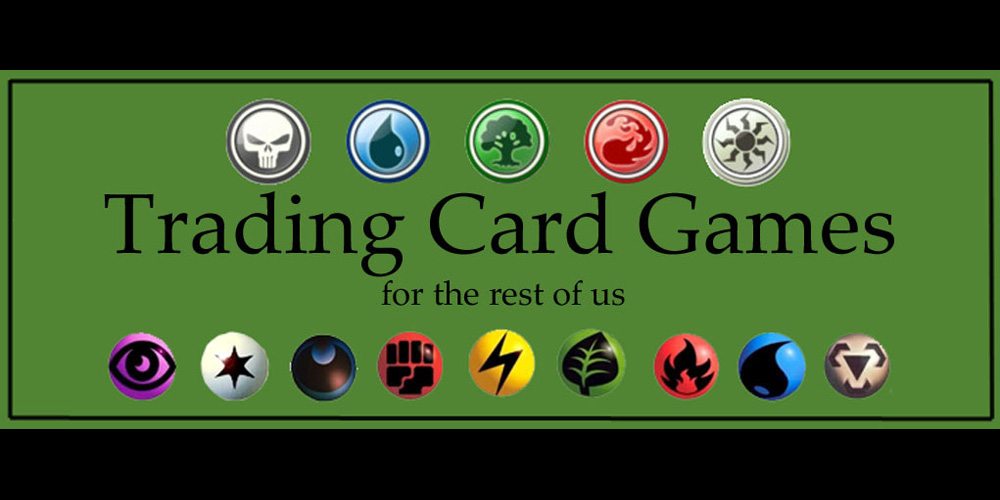Mysterium is a cooperative tabletop game that’s a bit like a cross between Codenames and Dixit, with a dash of Clue—and it is now available as an app, so you can play with people online or even play the Story Mode by yourself.
GeekDad Dave Banks introduced a bunch of us to Mysterium at Gen Con a few years ago, and I picked up a copy and have really enjoyed it since then, but we’ve never given a detailed explanation here. I’ll run through the game briefly from the perspective of the app. The physical version retails for $49.99, and the app is available now on iOS and Android for $6.99 and on Steam for $9.99. I was given a code for the iOS version to review.
The premise is that a bunch of psychics have been invited to Warwick Manor to investigate a mysterious death that occurred long ago. The current owner has been experiencing a ghostly presence, and wonders if that “accidental death” of a manservant was not so accidental after all. One player is the ghost, communicating to the psychics with images and visions, and the other players are psychics, trying to piece together the events of that evening and then identifying the culprit.

A number of suspect, location, and item cards are laid out where all the players can see them. Each player has a specific suspect, location, and potential weapon that the ghost must guide them to: these are the potential culprits, where they were that evening, and what items they had access to. Over the course of seven rounds (“hours”), the ghost will give clues to the psychics in the form of large illustrated cards, reminiscent of cards in Dixit. Most of them have a dreamlike quality to them, and enough different elements to be imprecise.
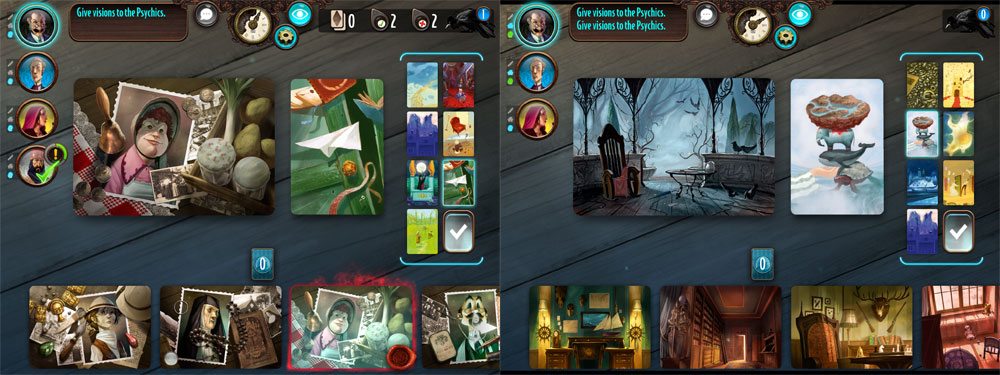
As the ghost, you can tap on the various psychics on the left to see which card they should currently be guessing: each one must guess the suspect, location, and item in that order. On the right side, you have seven different vision cards that you can give (and tapping on one shows a larger version of it). At the bottom are all of the different cards that the psychics can see—the correct guess is highlighted for the ghost. You can give any number of cards to each psychic, and then you’ll automatically draw back up to a hand of seven. You also have a limited number of “crows” that can be spent to discard and redraw cards if you don’t like what you have.
The psychics can also check to see what cards have been given to each psychic, and there’s a chat function where you can talk to each other in an online game—though the ghost isn’t allowed to communicate except via the cards. As players make their guesses, small circles of their player color appear on the cards at the bottom. (For instance, in the photo above, the white player has chosen the nun as his suspect, so there’s a small white circle there.) Players may also use their “clairvoyancy tokens” to indicate whether they think other players are right or wrong with their guesses—being correct gives you clairvoyancy points, which helps when you reach the last stage of the game. You start the game with 3 “correct” votes and 3 “incorrect” votes. Once they’re spent, they are discarded, but you’ll get all of them back at the beginning of round 4 to spend again.
Once every psychic has been given cards, a 2-minute timer begins, and players have until the timer ends to change their choices or clairvoyancy tokens. In the app, you may tap the clock to confirm your choices, and once all players have confirmed, it will skip to the next stage instead of waiting the full 2 minutes.

Once the timer is done, you find out whether each guess was correct or incorrect (and score points for clairvoyancy tokens, if any). Those who were correct will move on to the next thing they have to guess. Those who were wrong will remain at their current spot, and will get another chance to guess—and they keep all of the vision cards given to them on previous rounds. Incorrect guesses (or cards that have been correctly claimed by other players) are automatically greyed out in the app so that you can’t make the same wrong guess twice.
You have only seven rounds for all psychics to identify their three cards: suspect, location, and item. When you successfully identify all three, you also get some clairvoyancy points based on the number of hours remaining in the game. If anyone fails to get all three of their cards by the end of the seventh round, the game ends and everyone loses—the murderer was never identified.
However, if everyone succeeds, then the ghost has one final chance to communicate to the psychics.
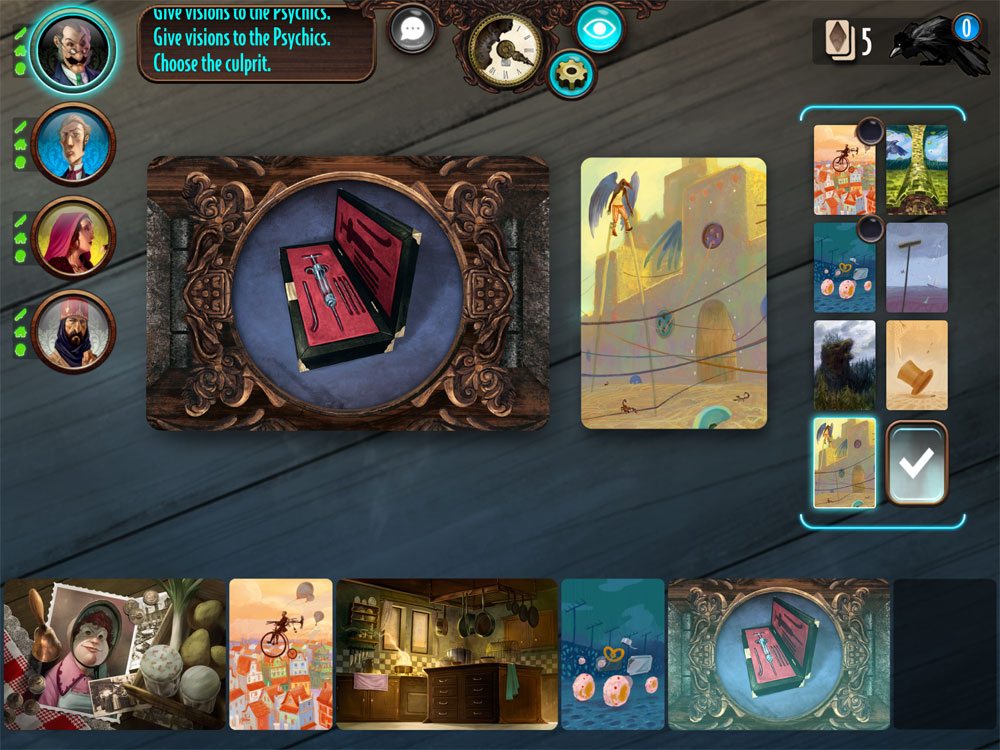
The ghost will choose one 3-card set as the culprit, and then will choose three vision cards to pass along—one for the suspect, one for the location, and one for the weapon. The psychics will then get to vote on which 3-card set they think is the solution.
But there’s a catch! Even though the ghost chooses three vision cards, you may not get to see all of them. The number you’ll get to see before making your choice depends on your clairvoyancy score. If you scored high enough, you will see all three cards, but if you scored low, you may have to make your choice based on seeing only one card. And even if you do see all three cards, you don’t know which card is is related to the suspect, which one is related to the location, and which one is related to the weapon. During this final selection, there is no discussion allowed—each player must choose on their own.
One interesting thing about the app is that it can display or hide cards for each player individually at the same time. In the physical game, you flip over one card, and some players will secretly make a vote. Then you flip the second card, and some players vote, and so on.
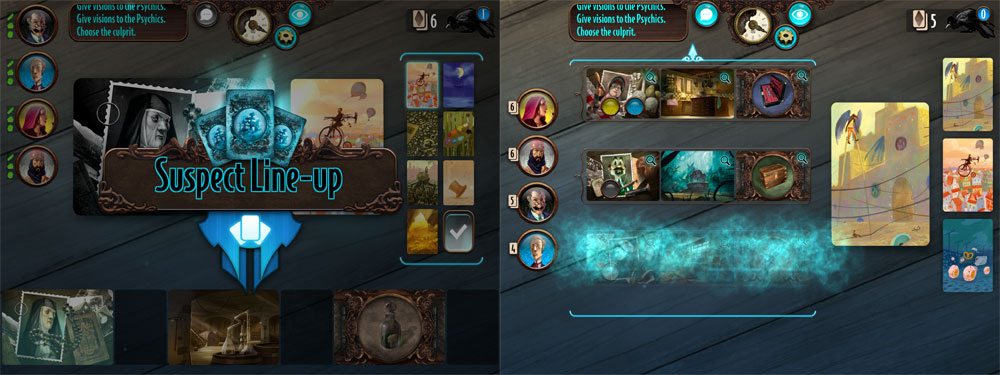
Once everyone has voted, the app displays all of the suspect combinations, from most votes to least. Then, it starts eliminating incorrect answers, from the bottom to the top, highlighting the correct answer in green when it appears. If the correct answer got the most votes, then the players win—otherwise, the mystery was unsolved and the players lose. If there are ties in the number of votes, ties are broken by clairvoyancy scores.
One odd thing about the app is that if your choice was incorrect, after it vanishes there is a green “Change Choice” button that appears—but it doesn’t appear to do anything. You’re not supposed to be able to change your choice after the answers are revealed anyway, so I imagine this is just an error and may be fixed in later updates.

The app version of Mysterium offers a few ways to play the game. Story Mode is a combination of a campaign and a tutorial, so that you can learn a bit about the game and also get a little story layered on top of it. Conrad, the owner of the mansion and an expert in crystal gazing, is investigating a series of mysterious murders that have taken place in Warwick. You play as Nathan, a young Irish journalist who had been stabbed in an attempted murder. As you play through the various cases, the other psychics arrive in Warwick and join the case, and you will sometimes play as the psychic and sometimes as the ghost (as they discover Nathan has an ability for channeling the ghost).
There are cut scenes that tell a little bit of the story, and it’s fun to see the various psychics from the tabletop game introduced, because the rulebook includes little biographies of each character even though it doesn’t have any effect on gameplay. The story mode walks you through various aspects of the game—for instance, you don’t use clairvoyancy tokens or crows at first.
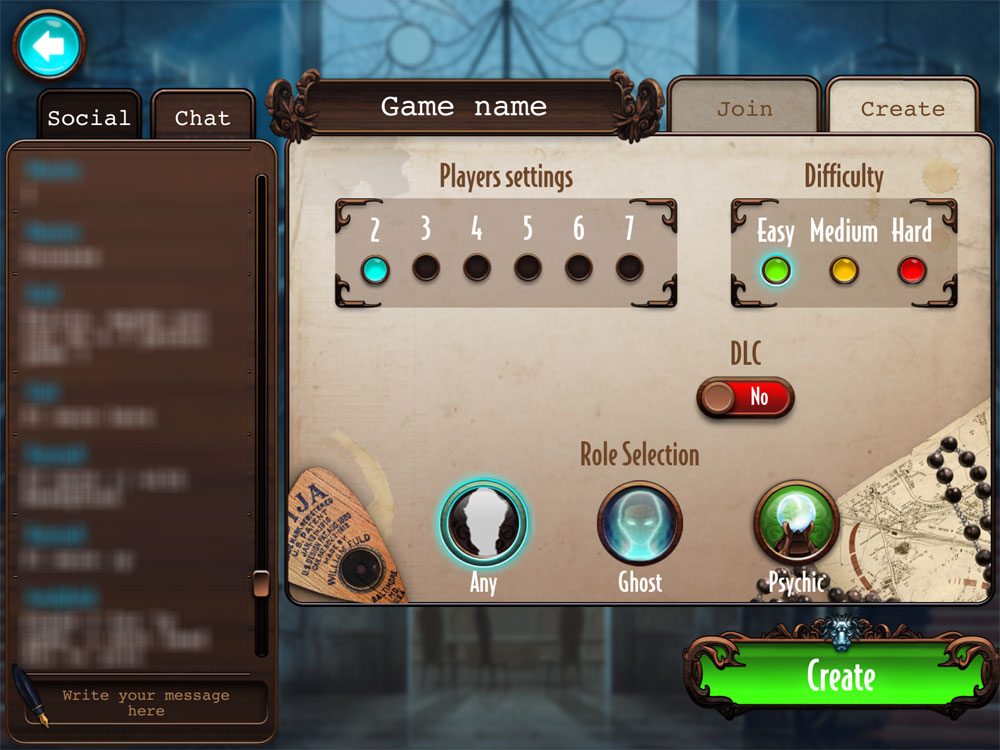
You also have the option of playing either online or with AI. There’s a lobby that uses your Asmodee login—you can see other online players in the “Social” tab or chat in the “Chat” tab. There are four options for play: Quick Play, Online, Blitz, and Solo. Quick Play will just find the quickest available game for you to join. Online (seen above) lets you join a game or create one—pick the number of players, difficulty level (which affects the number of crows and how many extra cards there are to make it harder to guess), as well as a role selection if you are sure you want to be either the ghost or a psychic. There’s also a switch for DLC (downloadable content) because the Hidden Signs expansion is also available for purchase for $2.99. Blitz games are shorter and more challenging. Solo lets you create a game with just AI players filling in for the other positions.
So far I haven’t played a lot of games online with other players–partly because the times I’ve been logged on and able to play, there haven’t been as many people logged on at the same time. It is a real-time game because of the time limits, so there’s no asynchronous play available. One thing I did find is that the AI player can be really odd—in one game I played, the AI let the timer run out completely on a couple occasions, not making a single guess at all. I hope the AI will improve a bit in future updates, but until then, I’d recommend playing with real people.
Overall the app has done a pretty good job of translating the tabletop experience to the iPad. There are ways to zoom in on cards to get a better look at details, and once you get used to the various indicators it’s easy to tell when somebody has chosen a card and you can put in a clairvoyancy token, or what cards they’ve previously received, and so on. Some aspects are easier to manage than the tabletop version—in particular, setup is a cinch, and nobody forgets to watch the sand timer.

However, because you’re limited to the size of your screen, you can’t take in everything at once. In the physical game, as the ghost player you can see a whole lot—all of the card combinations for all the players, the progress each psychic has made, what cards you’ve already given to each player, and so on. You can hear the discussions they’re having as you hand out the cards. That’s much harder to do with the app, where you can’t even see more than four of the card combinations on screen at one time—and that interface obscures everything else that’s going on.
That said, I know that not everyone wants to drop $50 on the tabletop version; you may not have the opportunity to get a bunch of people in the same room, or have enough table space to accommodate it. In that case, the app may be a better fit. Certainly the app is much more portable, allowing you to play anywhere at any time. Either way, though, Mysterium is a really fantastic cooperative game, and if you haven’t ever played, it’s worth taking a look!
Disclosure: I received a review copy of the app.



